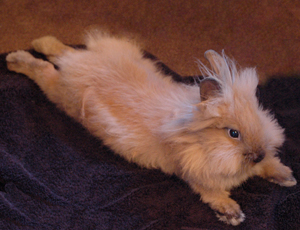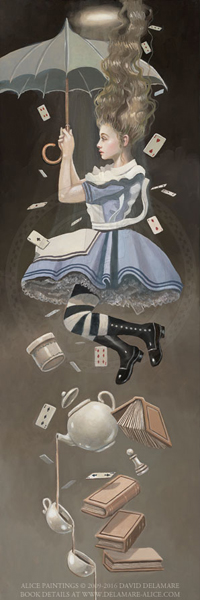ARTIST FAQs
What books did David Delamare illustrate?
Though David died in September 2016, his work continues. He had completed illustrations for a number of book projects which his widow, Wendy Ice will write and publish in the coming years. These will include a fairy book, a mermaid book, a retrospective and more. These are David’s completed books:
- Alice's Adventures in Wonderland (2016)
- Animerotics: A Forbidden Cabaret in 26 Acts (2001)
- Mermaids and Magic Shows: the Paintings of David Delamare (1997)
- Midnight Farm by Carly Simon (1997)
- The Man in the Moon and the Hot Air Balloon (1996)
- Cinderella (1993)
- The Christmas Secret (1991)
- The Nutcracker (1991)
- The Steadfast Tin Solder (1990)
- The Hawk's Tale (1988)
The Christmas Secret and Man in the Moon and the Hot Air Balloon were written by David. Cinderella was his own adaptation. David’s work also appeared in many other books (including drummer Mickey Hart’s Drumming at the Edge of Magic) and on book and album covers.
What media did David use?
In later years, David gradually transitioned into oil painting, which provided more texture and depth. Oils also slowed him down, keeping him more aware of the painting process.
The only time David ever used digital methods for art was when he and Wendy used Adobe Photoshop to tint his original pencil drawings for the Alice book. In fact, this was the first time David had used a desktop computer. In his entire life he sent only one or two emails and never sent a text message, though he did use an iPad to surf the web and compose music.
Did David work with models?
Where did David get his ideas?
David listened to music while he painted (from Mozart to Gershwin to Randy Newman) and was an avid reader (favorite authors included Samuel Beckett, John Cheever, Edith Wharton, and Alan Bennett.)
These influences often found their way into his paintings. Occasionally, he heard a phrase in a play or a passage of music and felt compelled to translate the idea into a visual form. But, his creative process was very organic and often his finished paintings were quite different from his original conceptions. At the time of his death, David had just completed music for his first (not yet produced) record album. You may find a few of his songs on CD Baby, the iTunes store, or Amazon.
Which painters did David admire?
How long did it take David to complete a painting?
What can you tell me about David's personal life?
For the last twenty-two years of his life, David was involved with Wendy Ice (his agent and publisher). Wendy and David met when he asked her to model for him. They finally married nineteen and a half years later on New Year's Eve, 2013 (during the Alice Kickstarter campaign.)
David and Wendy shared their 1908 Portland, Oregon home with two rabbit muses who lived in David’s art studio (Rupert Quincy and Chloe) and their company mascot (Pip), a giant tortoise. Rupert Quincy and Chloe were true muses for David. You may see photos of them by visiting Facebook and searching by "Rupert Quincy." This was Rupert.:

How can I see original artwork and follow new projects ?
To see David’s full range of work, we highly recommend following his Facebook page.
Wendy Ice posts a different image every day from the archives. Many of the images have never been seen before by the public. Facebook is also a great place to stay informed about new books and projects.
Can I view original art?
Can I find the art on licensed products?
If you’d like to see a particular product, please feel free to write and suggest it. Sometimes, we’re able to accommodate a request very quickly.
Can you tell me about David’s other artwork?
The best way to see the entire range of David’s work is to visit his official website or his Facebook page. Thank you so much for your support!
